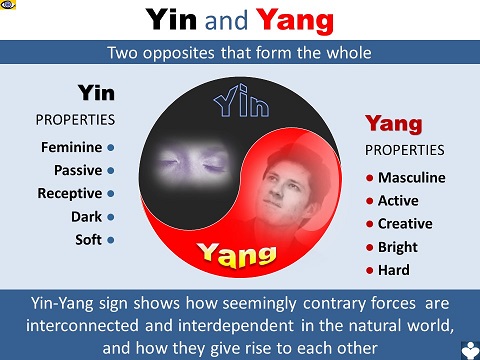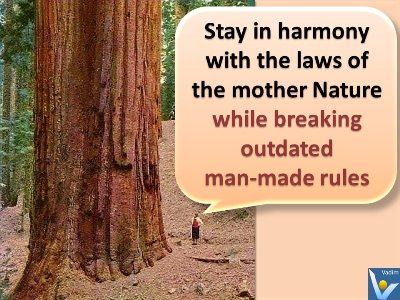| |
|
The Universal Law of
Polarity
|
|
|
| |
According to
Taoism,
Yin and Yang represent two fundamental forces that create and
harmonize the Universe. Yin and Yang symbolize the two polar
energies that, by their fluctuation and interaction, are responsible
for the dynamic universe.
The
concept Yin-Yang stems from the Book of Change (I-ching),
a Chinese book of wisdom. Yin and Yang
are polar manifestations of the Tao – the supreme ultimate. The One
is divided through the creative powers of the Tao into two opposite
energetics and dualities, which then give birth to "the ten thousand
things", their concrete manifestations being Earth and Heaven. |
|
 |
| |
The universal law of Unity and
Struggle of Opposites occupies a
central position in materialist
dialectics
Characterizing an object as
subordinate to the law of unity
and struggle of opposites points
to a source of general
self-movement and
self-development to be found
within the object.
The law of the unity and
struggle of opposites focuses on
the transient nature of all
organic forms of existence in
nature and society and their
transition to higher and more
developed forms through the
exhaustion of their potentials.
The Universal Law of Unity and
Struggle of opposites helps
defeat attempts to interpret
antagonisms as absolutely
destructive and fatal. An
antagonism is only a transient
form of relations between
opposites. A false apology for
antagonisms leads to the concept
of opposites without unity,
without common origins.
|
|
Degendarization
New Oxford
Definitions
Gender-free Songs
Sexless
Cultures
Prediction
2050 |
|
|
|
|
According to Montesquie
(1689-1755), a French philosopher and
enlightenment thinker, God created laws of nature
and it is through them that he governs all creation and preserves
it. |
|
| |
|
The 12
Universal Laws
The 12 universal laws were
discovered by humans through their observations and experiences.
These laws describe the way things operate in this time-space
reality. |
|
|
| |
The 12 Laws of the Universe are the Law of
Divine Oneness, the Law of Vibration,
the Law of Correspondence, the Law of Attraction, the Law of Inspired Action,
the Law of Perpetual Transmutation of Energy, the Law of Cause and Effect, the
Law of Compensation, the Law of Relativity, the Law of Polarity, the Law of
Rhythm, and the Law of Gender. |
|
 |
|
|
|